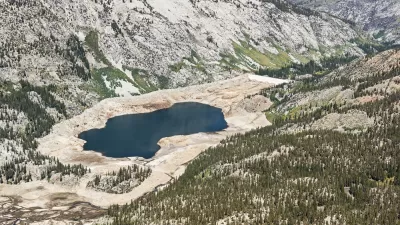A growing population and drought across the West is leading some experts to call for changes in the way governments and utilities charge for water. The difference between the way Tucson and Phoenix, for instance charge for water, is striking.
Jamie Killin explores the price of water in Arizona, where academics and advocates are calling for governments and utilities to raise the price of water to better reflect growing scarcity and to encourage conservation.
"In general, local governments and utilities price water according to the cost it takes to treat it and build and maintain the infrastructure necessary to transport it. Most water departments and water utilities run as enterprise funds that are required to recover only the costs they incur," writes Killin.
Other cities "have adopted a block pricing structure, which charges lighter water users, consuming what they need to live and maintain their homes, at a lower rate while charging heavier water users higher rates beyond a base tier."
As an example of the latter, "Tucson has one of the most steeply blocked pricing structures in the state. The owner of a single-family home will pay $1.29 per 100 cubic feet of water – 748 gallons – up to a level Tucson Water says covers the usage of most households. The highest of the four pricing blocks is $11.04 per 100 cubic feet for the heaviest water users."
Water costs in Phoenix, however, are the eighth lowest on a list of 30 U.S. cities, according to a Circle of Blue study cited by Killin.
Even under the current regime, the price of water is likely to increase, as municipalities and utilities search for the supply to maintain growing population levels, according to a recent report by the Arizona Department of Water Resources.
FULL STORY: Could price be a tool for encouraging water conservation in Arizona?

Alabama: Trump Terminates Settlements for Black Communities Harmed By Raw Sewage
Trump deemed the landmark civil rights agreement “illegal DEI and environmental justice policy.”

Study: Maui’s Plan to Convert Vacation Rentals to Long-Term Housing Could Cause Nearly $1 Billion Economic Loss
The plan would reduce visitor accommodation by 25% resulting in 1,900 jobs lost.

Planetizen Federal Action Tracker
A weekly monitor of how Trump’s orders and actions are impacting planners and planning in America.

Wind Energy on the Rise Despite Federal Policy Reversal
The Trump administration is revoking federal support for renewable energy, but demand for new projects continues unabated.

Passengers Flock to Caltrain After Electrification
The new electric trains are running faster and more reliably, leading to strong ridership growth on the Bay Area rail system.

Texas Churches Rally Behind ‘Yes in God’s Back Yard’ Legislation
Religious leaders want the state to reduce zoning regulations to streamline leasing church-owned land to housing developers.
Urban Design for Planners 1: Software Tools
This six-course series explores essential urban design concepts using open source software and equips planners with the tools they need to participate fully in the urban design process.
Planning for Universal Design
Learn the tools for implementing Universal Design in planning regulations.
Caltrans
Smith Gee Studio
Institute for Housing and Urban Development Studies (IHS)
City of Grandview
Harvard GSD Executive Education
Toledo-Lucas County Plan Commissions
Salt Lake City
NYU Wagner Graduate School of Public Service





























